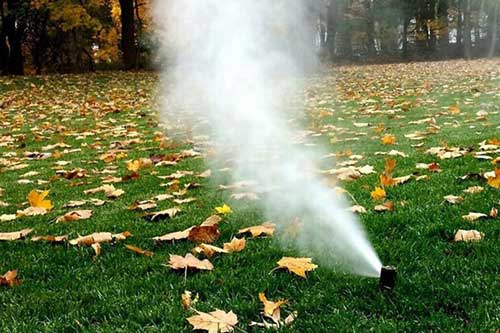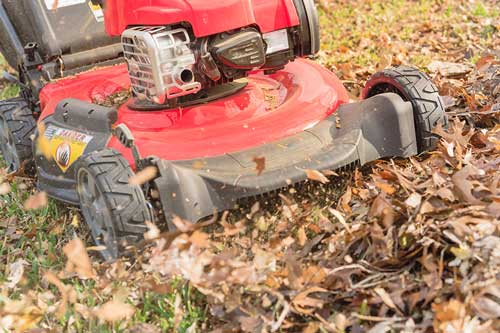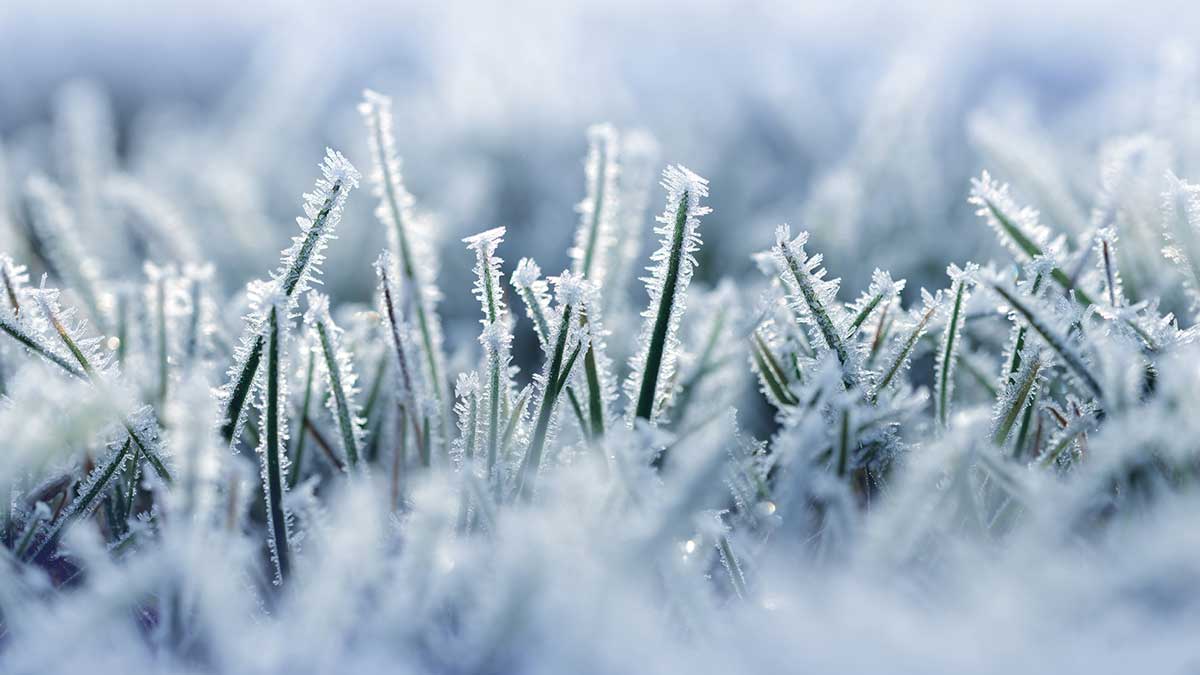Kansas City’s first frost marks a shift in seasons, signaling the transition from fall to winter. While the crisp air and golden leaves are beautiful, this change can have significant effects on your lawn. Without proper preparation, frost can lead to stress on grass, damage to plants, and even long-term lawn issues. Understanding how frost impacts your yard and taking proactive steps can ensure a healthy, vibrant lawn come spring.
- Understanding the First Frost and Its Impact on Your Lawn
- The Role of Fall Lawn Care in Frost Protection
- How to Water Your Lawn Before and After the First Frost
- Protecting Your Irrigation System from Freeze Damage
- Lawn Mowing Tips to Minimize Frost Damage
- Dealing with Leaves and Lawn Debris Before the First Frost
- The Benefits of Applying Mulch and Protecting Plants from Frost
- Winter Weed Prevention: What You Need to Do Now
- Let the Experts Handle Your Winter Lawn Care
Understanding the First Frost and Its Impact on Your Lawn
Frost occurs when temperatures drop to 32°F or below, causing moisture on surfaces, including your lawn, to freeze. While some grasses, particularly cool-season varieties like fescue and bluegrass, can tolerate frost, repeated exposure can weaken them if not properly cared for.
One key concern is that foot traffic on frost-covered grass can cause damage. When blades of grass are frozen, they become brittle. Walking across a frosty lawn can crush these blades, leading to brown patches and dead spots that take months to recover.
Additionally, frost slows down biological processes within the soil. As temperatures drop, grass growth ceases, and the absorption of nutrients and water diminishes. Without preparation, your lawn may struggle through the winter and emerge weak in spring.
The Role of Fall Lawn Care in Frost Protection
Before the first frost arrives, it’s essential to give your lawn the best possible care. A well-prepared lawn is more resilient to frost damage and can recover faster once temperatures warm up again.
One of the most important steps is fall lawn fertilization. Applying a balanced, slow-release fertilizer in early to mid-fall ensures that your grass receives essential nutrients to develop strong roots before dormancy. The stronger the root system, the better your lawn can withstand winter stress.
Another crucial task is aeration and overseeding. Aeration helps relieve soil compaction, allowing oxygen and nutrients to penetrate deep into the root zone. When combined with overseeding, it promotes thicker grass growth, which acts as an insulating layer against frost damage.
How to Water Your Lawn Before and After the First Frost
Many homeowners make the mistake of stopping watering too early in the fall. While Kansas City’s cooler temperatures reduce the need for frequent watering, soil moisture is still vital for healthy root development before winter.
A good rule of thumb is to continue watering until the ground starts to freeze. Watering deeply once or twice a week (depending on rainfall) helps ensure the soil remains hydrated. Dry soil freezes more quickly than moist soil, which can lead to frost penetration deep into the root system.
However, watering during the wrong time of day can backfire. Always water in the morning rather than in the evening to allow time for evaporation. Water left sitting on the lawn overnight can freeze, leading to frost damage.
Protecting Your Irrigation System from Freeze Damage

Winterize your irrigation system before the first freeze! A sprinkler blowout removes excess water, preventing costly freeze damage.
Irrigation systems are particularly vulnerable to Kansas City’s first frost. Water left in pipes, valves, and sprinkler heads can freeze and expand, causing cracks and costly damage.
To prevent this, it’s essential to schedule an irrigation blowout service before the first frost. This process removes excess water from the system, ensuring that freezing temperatures don’t lead to ruptured pipes.
If you’re unable to winterize your irrigation system professionally, make sure to at least turn off the water supply and drain any above-ground components. Insulating valve boxes and backflow preventers can also add an extra layer of protection.
Lawn Mowing Tips to Minimize Frost Damage
Many homeowners wonder when to give their lawn the final mow of the season. The best approach is to gradually lower the mowing height in the fall, ensuring grass isn’t too long or too short before winter.
Tall grass tends to mat down under frost and snow, increasing the risk of fungal diseases like snow mold. On the other hand, cutting your lawn too short can expose the crown of the grass plant, making it more susceptible to winter damage.
For most Kansas City lawns, the ideal final mowing height is around 2.5 to 3 inches. This height strikes the perfect balance between winter resilience and preventing excessive thatch buildup.
Dealing with Leaves and Lawn Debris Before the First Frost

Mulch your leaves, don’t bag them! A mulching mower turns fallen leaves into nutrient-rich organic matter, helping your lawn stay healthy through winter.
A thick layer of leaves left on your lawn can suffocate the grass, blocking sunlight and trapping moisture. When the first frost hits, this creates the perfect environment for fungal growth, pests, and disease.
Instead of letting leaves pile up, consider mulching them with your mower. Mulched leaves decompose quickly, adding valuable organic matter back into the soil. If there’s an excessive buildup, rake or use a leaf blower to remove them before the frost arrives.
The same principle applies to other lawn debris. Remove fallen branches, excess thatch, and any objects that could create dead spots once covered by frost or snow.
The Benefits of Applying Mulch and Protecting Plants from Frost
For landscape beds, mulching is one of the best defenses against frost damage. A 2-3 inch layer of mulch helps insulate plant roots, preventing rapid temperature fluctuations that can cause stress.
Tender plants, shrubs, and young trees are particularly vulnerable. Using burlap wraps, frost blankets, or even an overturned bucket for small plants can offer protection on especially cold nights.
For Kansas City homeowners with fall flower pots, consider moving them to a covered area or using breathable fabric covers to shield them from frost.
Winter Weed Prevention: What You Need to Do Now
One of the best-kept secrets of lawn care is that fall is the perfect time for weed control. Many weeds, including dandelions and clover, begin germinating in the fall and thrive through the winter if left unchecked.
Applying a pre-emergent herbicide in early fall can significantly reduce weed problems in the spring. If weeds have already emerged, spot-treating with a post-emergent herbicide can help keep them under control.
Since Kansas City’s first frost often signals the end of active lawn growth, tackling weeds now gives your grass a better head start when spring arrives.
Let the Experts Handle Your Winter Lawn Care
Preparing your lawn for winter can be a challenge, but you don’t have to do it alone. At Aspen Lawn & Pest Control, we specialize in aeration, overseeding, fall fertilization, and irrigation winterization, ensuring your lawn is protected from the harsh Kansas City winters. Proper seasonal care now means a healthier, greener lawn when spring returns.
Don’t wait until it’s too late. Schedule your winter lawn care services today or request a Free Estimate to keep your yard in peak condition all season long!


Socials